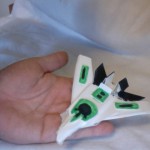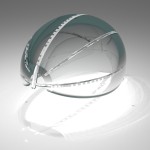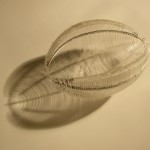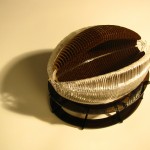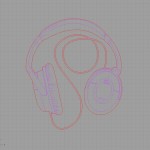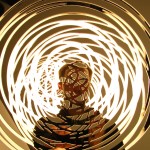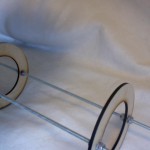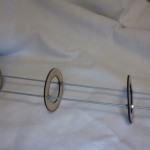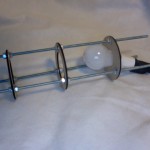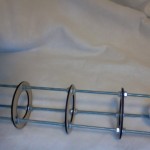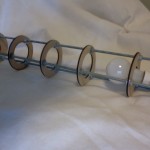I made a small file in Rhino and purely cut it out of Stonehenge Printmaking paper. I wanted to not make fold lines and strong cuts because I felt that this mini assignment really influenced me to create something out of hand and leaving some sense of ‘human error’ in the design. I also felt the small cute form of an F-14 Tomcat, the most decorated fighter in history, was interesting because of it’s smooth translation from war machine to toy.

Excellent article on the Make Blog on cnc joinery, including discussions of laser-cutting vs. cnc routing (see section titled “Laser vs. Rotary Cutters – The Inside Corner Problem“), as well as wood-bending with cnc machinery (see “Flexures“).
For my origami project I modeled three pyramids in rhino, unfolded them in pepakura and printed them out in two different materials on the laser cutter.
These are cut out of handmade paper:

These were made with stonehedge with rasters:
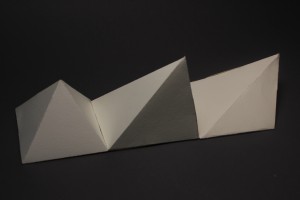
PEOPLE and COMMUNITIES
EXAMPLES for RHINO and GRASSHOPPER
- Cairo Patterns: transforms a surface into 4 or 5 sided Cairo Patterns
- Paper Fold: models simple folding of a single plane of paper [look for “paperfold.ghx”]
- Rigid Origami Folding: models the folding action of a strip of paper
- Origami pyramid: models the folding action of a flat plane into a pyramid [look for “origamipyramid.ghx”]
- Origami 4 point Star: fully models construction of a fourpoint star in Grasshopper [look for “Origami4PointStar.ghx”]
The Grasshopper and Rhinoscript examples from class are
here.
TOOLS
BOOKS
OTHER
I found this artist Bert Simon who does 3D paper sculptures of people by using a photograph as reference for a 3D model and then distorts the photo in accordance to the model. Thought it was an interesting project.


http://www.bertsimons.nl/portfolio/papersculptures/rozemarijn/
Well… this was definitely not as good as a design. While it may be lighter, the structural integrity I had with the original 3 rod Light Rod is crucial for the stability of the piece. My installation of this is going well forward as I found a way to directly wire each light bulb in a circuit. None the less a far inferior design and does not conceptually grasp the “subversive alternative light” that the other, larger Light Rod had.


